Sunset frogs in the cool and wet
Late in the 20th century, in a remote part of the southern forests west of Denmark, Professor Pierre Horwitz found something remarkable in a peatland: a small frog with gorgeous sunset colours and an ancestry dating back some 33-36 million years. A few months later, a prescribed burn was conducted in the forest block where the frog was found.
Pierre’s story is rich with personal insights, some wry humour and some sadness. Gondwana Link invites you to go wading with Pierre on his 12-month journey through the world of wetlands in a cool, wet corner of the Great Southern.
Story by Prof. Pierre Horwitz
My passion for southern freshwater wetlands grew while I was in Tasmania doing a doctorate on freshwater crayfish. I immersed myself in a fabulous array of wetland types to learn about the aquatic species that inhabit them.
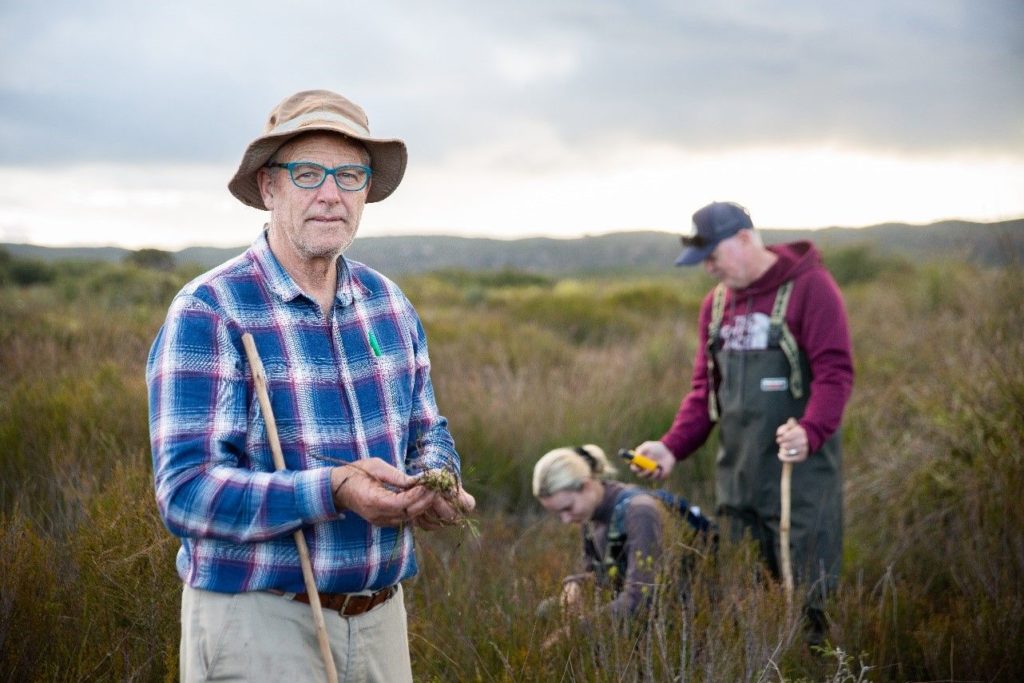
So, after moving back to Perth in 1993, imagine my joy at receiving funding from the Australian Heritage Commission to survey the wetland fauna in the southern forest region of Western Australia. At the time, the remarkable cool temperate eucalypt forests of karri, jarrah, tingle, and the many wetlands and granite outcrop ecosystems found within them, were attracting national interest: there was concern for the impacts of forestry activities, particularly woodchipping and clearfell logging in native forests.
My brief was to survey a range of wetland types, including lakes, marshes, swamps, peatlands and damplands. Wading, walking on spongy ground and getting my boots stuck in mud would all be part of my experience while studying this richness of wetness in the landscape.
My knowledge network
While planning my project, I learnt a lot from my former university lecturers Bert and Barbara York Main, who made legendary contributions to the fields of zoology and plant and animal interactions. They considered that all reasonably undisturbed, permanent or permanently moist, freshwater habitats in south-west Australia were places where relictual aquatic species could be found. Relictual species are ones that have changed very little over millions of years and come from a time in the far distant past when wetness was a more permanent feature of the landscape. They are very important for biological conservation because of their distinctive and uncommon genetic diversity.
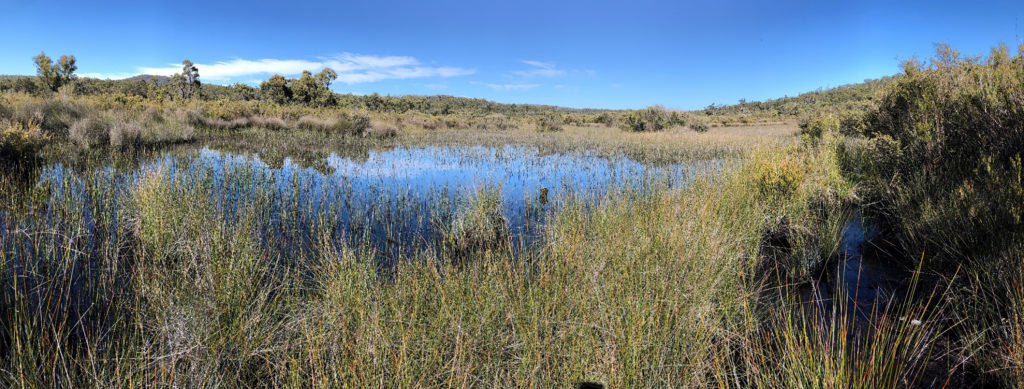
Image David Edmonds.
Botanist Grant Wardell-Johnson also influenced decisions on where to focus my work. During a whirlwind tour of the Walpole-Nornalup-Bow Bridge country, where he did his landmark research on tingle forest and related vegetation communities, I did my best to mark on a map whenever Grant waved his hand in the direction of a swamp with the words “you’ll get something interesting in there”. Just about everywhere, apparently.
For my survey I selected around 45 wetlands to sample each season for one calendar year. Many of the wetlands were located to the north and west of Bow Bridge, in the Denmark Shire.

Aquatic fauna and their habitats
To understand the aquatic fauna I concentrated on invertebrates, and the largest of these was the freshwater crayfish, including – excitingly – some multicoloured burrowing ones known as Engaewa. I found at least three species in my wetlands ‒ two of them are short-range endemics, which gives them special importance because they are only found in a very localised area – nowhere else on the planet.
The other invertebrates included aquatic insects like dragonflies and damselflies; crustaceans like shrimps and much smaller ones – the seed shrimps and aquatic fleas; a huge array of worms (aquatic earthworms, round worms and flat worms); and of course aquatic snails and mussels. These small creatures are a perpetual source of fascination for me ‒ all the different ways of living in the wet.
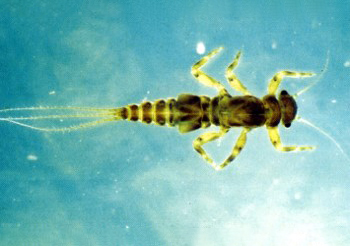
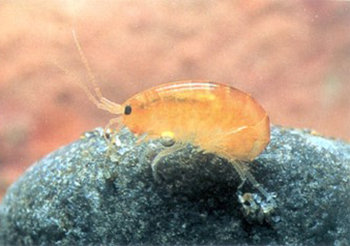
It was also important to know where in the wetlands these animals were found – what was their habitat? I looked in surface waters, in flowing and non-flowing waters, and both vegetated and open water.

At the time there was an increasing recognition that groundwater also contained a diversity of animals – called stygofauna – and I sampled the water table in wetland sediments in two ways: in a permanent little borehole at each site, and also by siphoning out water from crayfish burrows. I knew from my Tasmanian research that freshwater crayfish burrows were wonderful refuges for other invertebrates, as they provided shelter from the seasonal drying that occurs in some wetlands.
Fish and frogs were everywhere ‒ they were important and interesting as another way of knowing the wetlands. At most of my sites I recorded the frog calls, and I identified as best I could any tadpoles and fish I collected in my nets.
Increasingly over those 12 months I realised the value of these wetlands as refuges for relictual aquatic species. Anywhere in the cool, southern forest landscape that retained its moisture throughout the year was a potential refuge against droughts – summer droughts, a drier year, or a series of drier years.
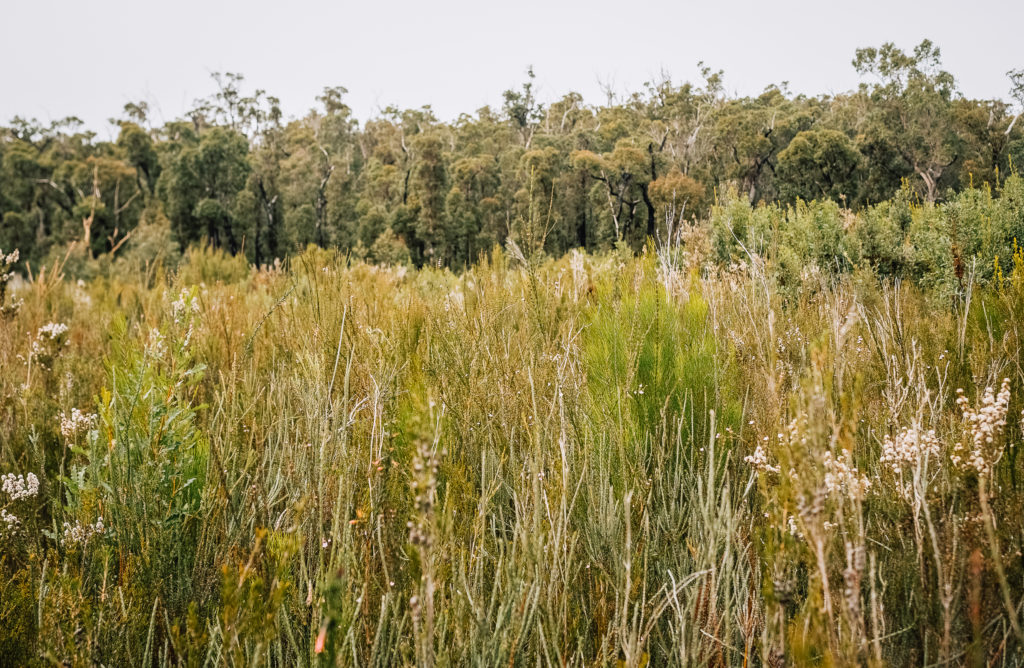
Peatlands are one such refuge, and I want to explain why because they are key to my story below. Peatlands are permanently saturated soils, usually found where water seeps or springs to the surface. Their presence is also marked by particular vegetation like sedges and mosses which tolerate the wet, and as places where organic matter (dead plant material) accumulates quite quickly (geologically speaking). Their permanent wetness makes them an attractive home to all sorts of creatures.
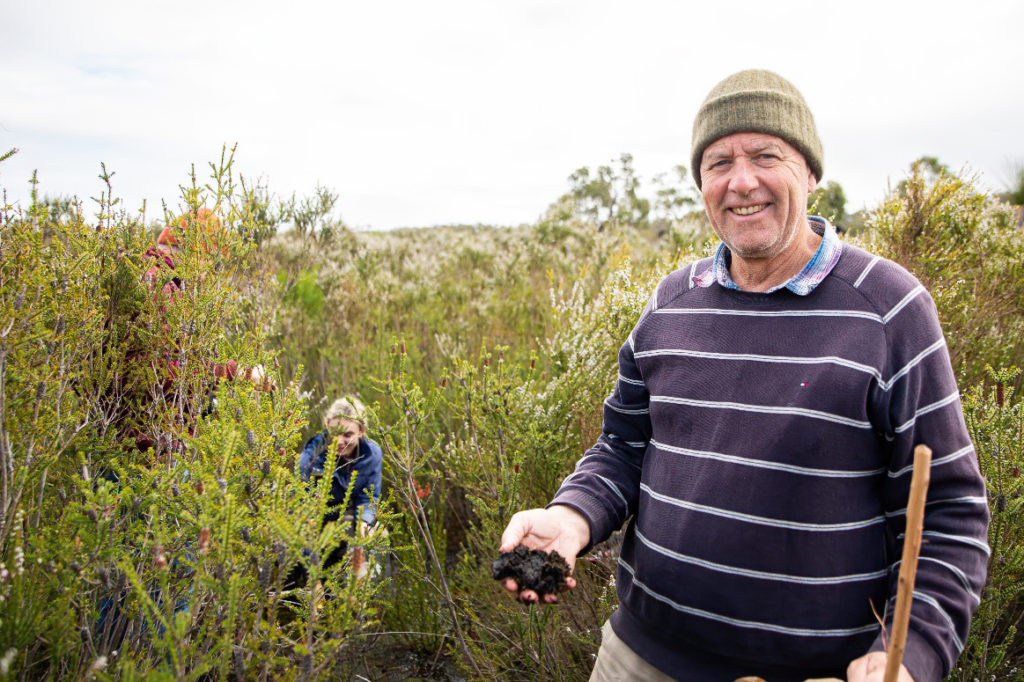
Missing something
Starting in autumn 1993, I surveyed each lake, marsh, swamp, peatland and dampland. I visited again in winter and spring that year. The seasonal sampling was going well and it was already quite clear that the aquatic fauna of non-flowing wetlands in the far southwest were riddled with high conservation value, short-range endemic invertebrates.
I loved being in these beautiful cool and wet parts of the landscape and was captivated by the thought that they had persisted for thousands or millions of years; forever really. It was a motivation for me then, and still is now, to help keep them that way.
My last visits were in the new year of 1994, in a warm summer. Working in the field at the time with my colleague Kim Richardson, and with our families camping for the holidays in Walpole, I was keen to make sure that we’d done a thorough job at each of the 45 sites. One of the sites hadn’t yielded anything of particular interest in previous visits, and I had a sense we were missing something. The wetland was deep in the tingle forest-granite-wetland ecosystems north of Bow Bridge, a delightful swamp nestled in a broad valley, with deep peats, still spongy even though the surroundings were drying out as summer was taking hold.
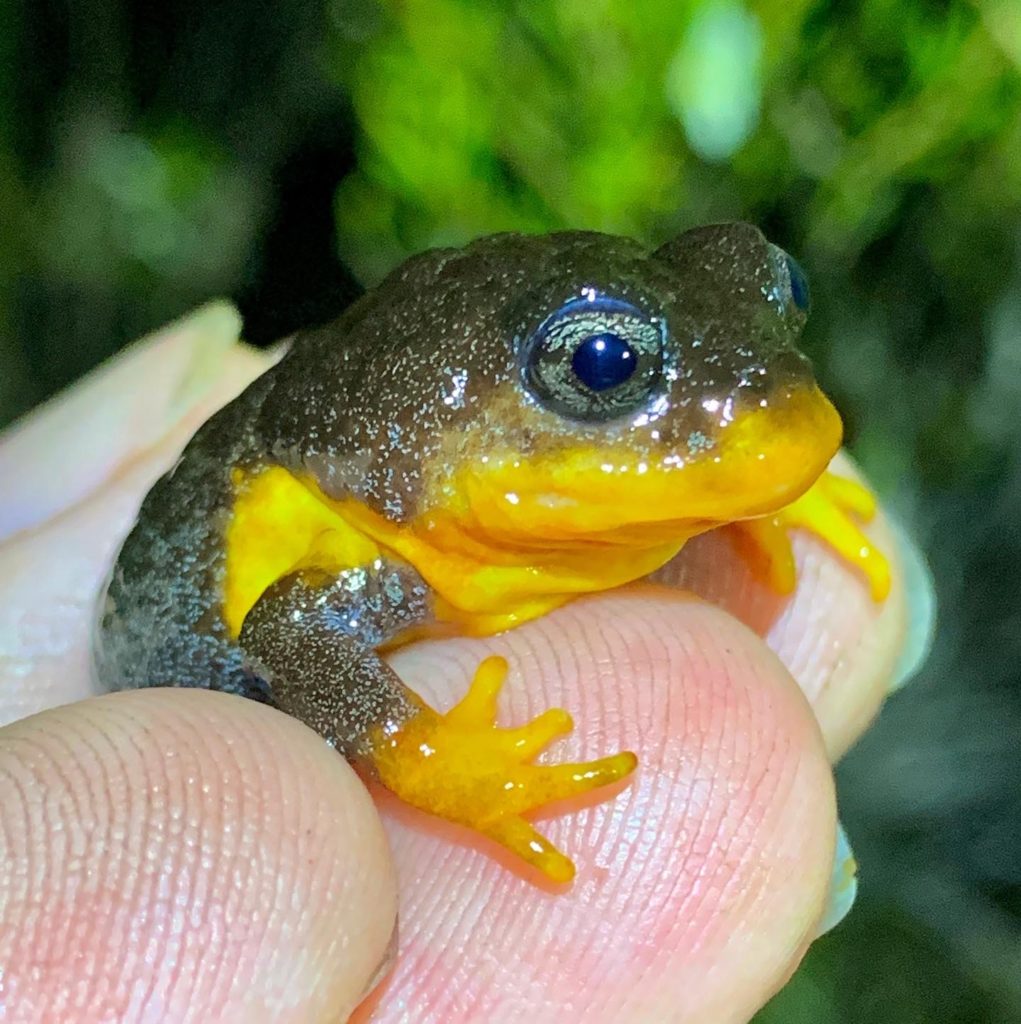
I was actually looking for crayfish burrows, and my habit was to feel around with my hands in the peat where there were holes in the ground. Reaching under a small ledge in the peat, I felt something wet walk onto my hand. Instinctively cupping my hand gently, I brought it closer to see.
A frog, like I’d never seen before. And, remarkably, it walked, rather than hopped. I was confused. It was about 3 cm in size, chubby, chocolatey brown on top with orange hands and feet, like it was wearing some sort of wetsuit.
I turned it over and was overcome by colour; the orange was uniformly all over the throat and upper chest. The lower belly and thighs were a bright blue, with white flecks. It was our western sunset – orange sky and blue water.
I called out excitedly to Kim and we pored over the reference books we had in the car. As we suspected, nothing matched. My mind was racing with excitement. I wanted to shout it to the world, even though literally no-one, apart from Kim, would hear.
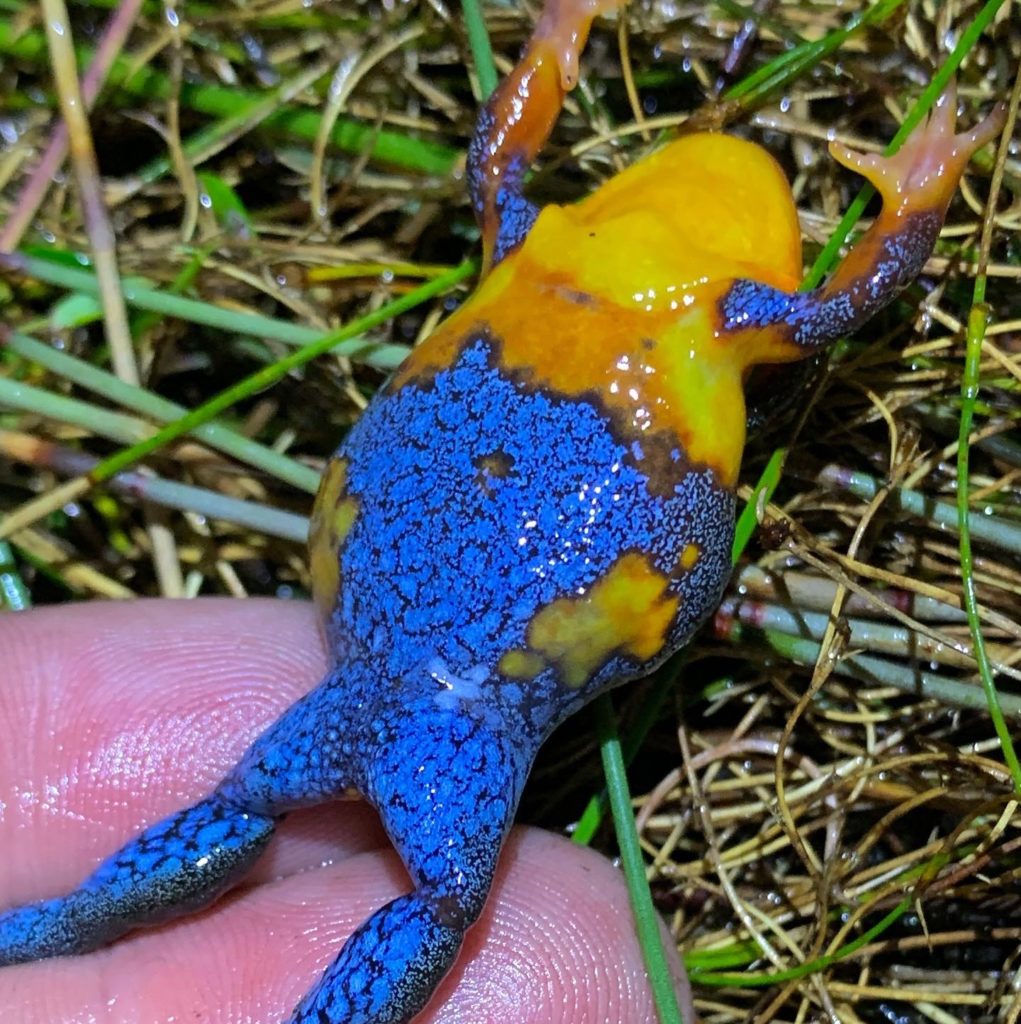
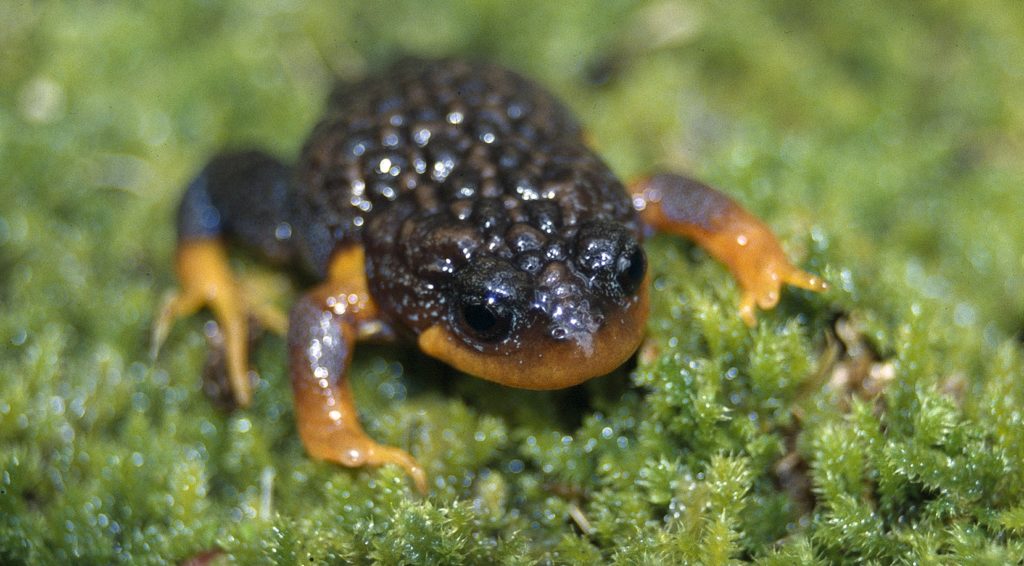
It was a warm day and we put the frog in a wet calico bag, with a handful of peat and vegetation from the swamp, and kept it cool and moist like this, like the most precious thing I’d ever had to look after, for the rest of our field trip. It was an agonising delay – I was constrained by that weird scientific professionalism that upholds secrecy and self-doubt ‒ until I could get it back to show my colleagues in Perth, who were waiting with some incredulity to see this thing.
Ecology, Geography, Politics
Finally the day arrived when I was able to show the frog – by now an animal I was particularly fond of – first to Grant at his workplace, and then frog biologist Dale Roberts joined us. Soon a crowd gathered, and I recall a largish group of scientists, many of them bearded, peering down at it in amazement.

Confirming that the frog was indeed not scientifically known from the southwest, we spent much of the next few months looking for more of the frogs (and finding them close-by). And we grappled with what it meant to find this stunning frog late in the twentieth century, during the forest debate and with prescribed burning a frequent occurrence for peatlands.
That it was found in this habitat ‒ a peatland ‒ reinforced the idea that there was a gap in scientific knowledge about these ecosystems. Its location suggested to us that it would only be found in the wettest and coolest part of the state. It was unlikely to be common, and unlikely to be widespread. So, we were looking at an iconic representative of the far southwestern aquatic biota, and one that was likely to be a short-range endemic.
And among the excitement, we worked hard to bring this frog to the attention of the public, and to the scientific community, with a popular article in Nature Australia, and a scientific description in the journal Copeia, with the Latin name Spicospina flammocaerulea (meaning “spiky-spined orange-blue”) and our estimation that the lineage (ancestry) to which it belonged is very old ‒ 33-36 million years old. And we knew what Bert and Barbara York Main meant about refuges for relictual species – the peatlands where the sunset frog was found have a high moisture content in the soil and would have been protected from climatic extremes.
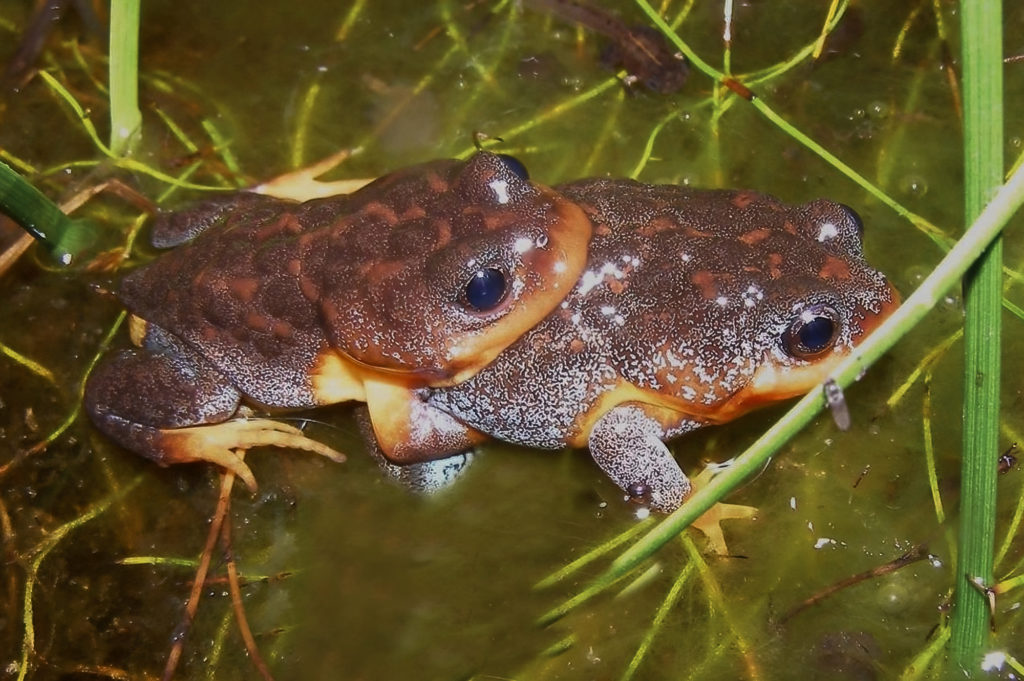
Beyond that scientific treatment, things heated up.
We argued about the logic of the claim that no species was threatened by forestry activities; how could this be so when we didn’t even know what species occurred in wetlands embedded in forested ecosystems. That debate continued into the Regional Forest Agreement over the subsequent five years.
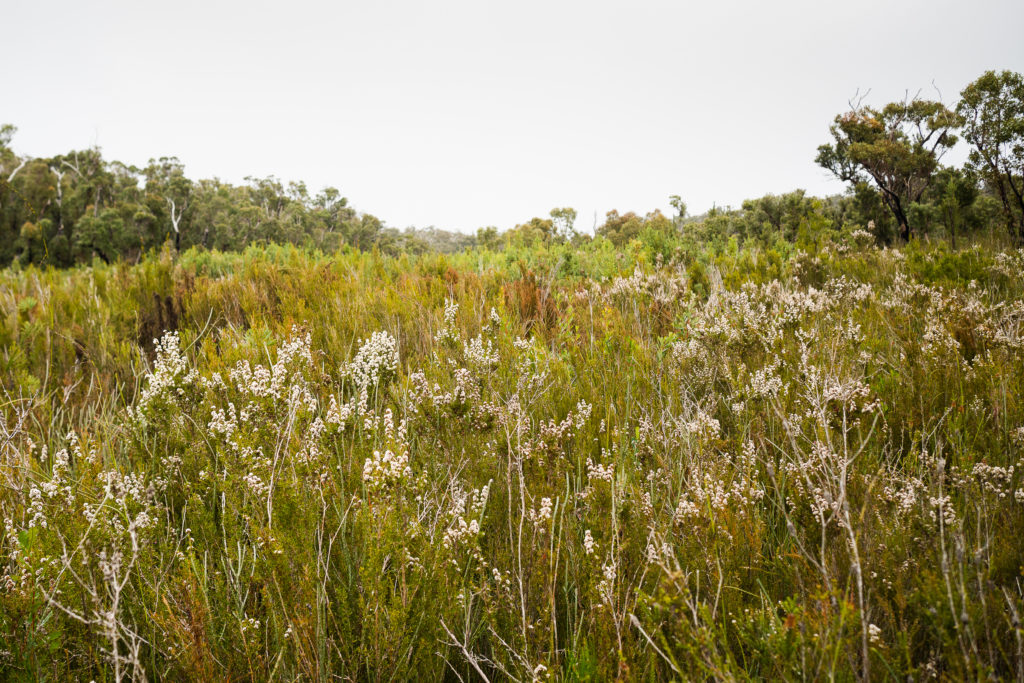
And relatively quickly after that summer find, in 1994, we thought that the dry conditions experienced at the time, and the vulnerability of peats to fire, warranted a special letter to the then Executive Director of the Department of Conservation and Land Management. We informed him and his Department about the frog population and its location, specifically mentioning the vulnerability of peats to fire, and the potential for the frog population to be impacted. Not long after our letter – a matter of only months ‒ a prescribed burn occurred in the forest block where the frog was found. Aghast and protesting, we were told it was to protect frog populations.

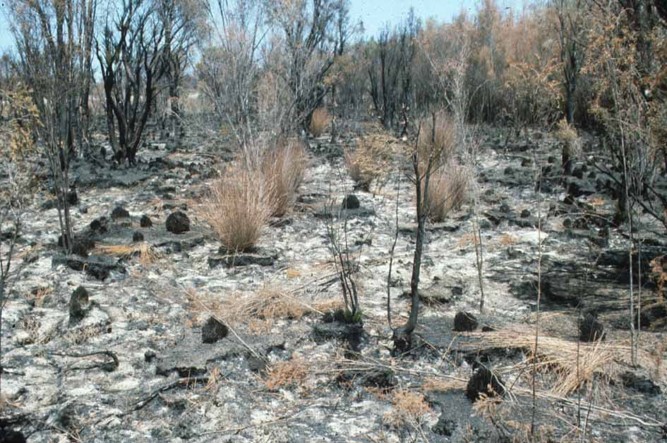
Twenty-eight years later, changes in rainfall patterns are accelerating. Prescribed burning remains a regular management strategy in the forest blocks where this frog, and other short-range endemics, occur.
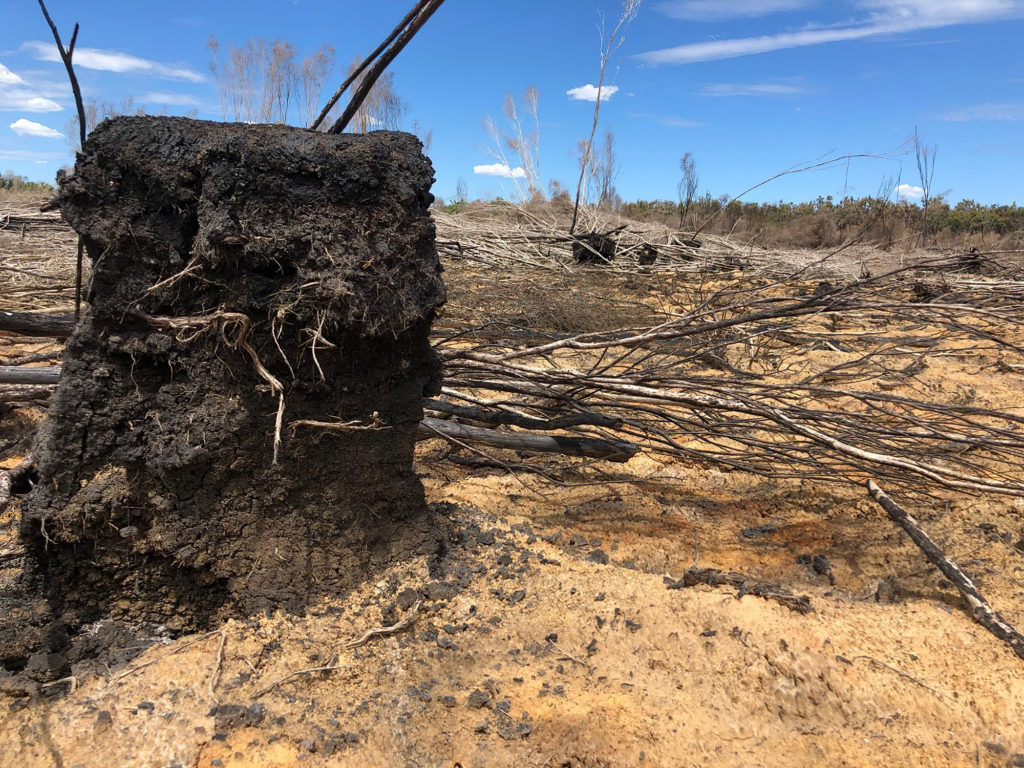
Most peatlands have lost substantial amounts of their organic soil profiles due to burning from these fires. The question of whether fire is detrimental to the sunset frog or not remains the subject of debate, as is the whole question of fire in the forests.
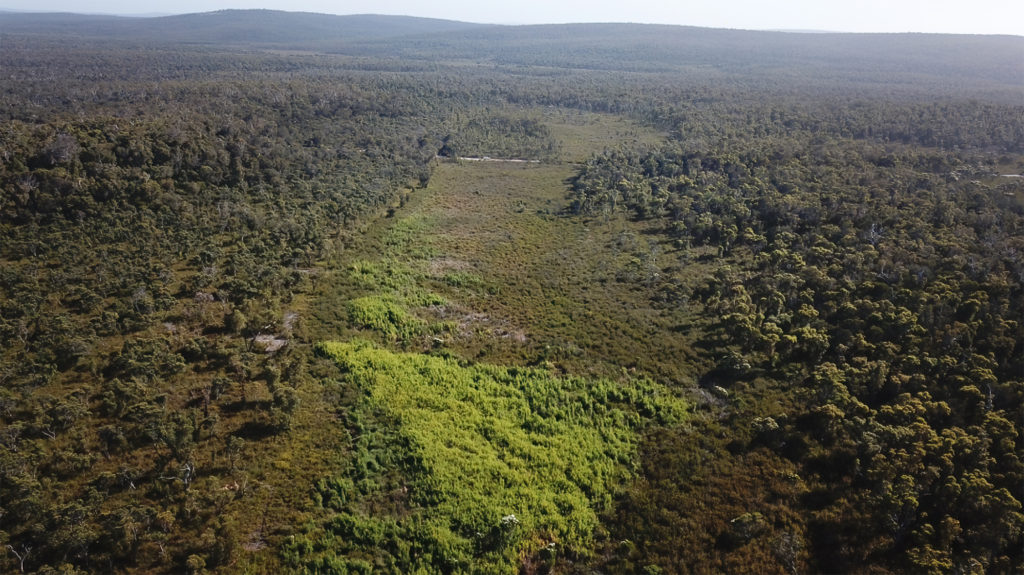
Originally recognised as an “Endangered” species, in 2018 the conservation status of the sunset frog was downgraded by the Commonwealth Government to the lesser status of “Vulnerable”, mainly because of lack of evidence of population declines. Some evidence suggests that breeding can occur after a fire, but it is hard to imagine frogs surviving a deep peat fire. Fire also opens up the sedges and heaths, making them accessible to feral pigs, which cause considerable damage to the peats by digging, leaving exposed more soil, and causing more drying.
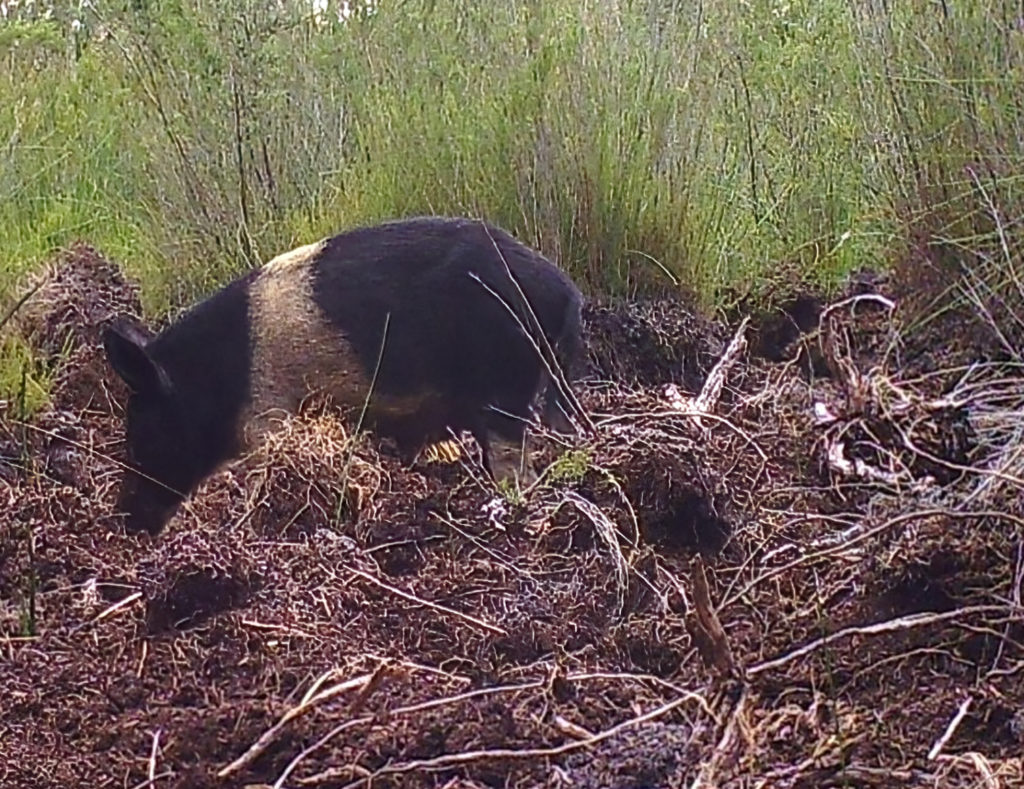
So we are worried about the sunset frog, highly localised in the bottom corner of the Denmark Shire, a stunning emblem of the cool and wet, whose future is challenged by legacies of the past, and hotter and drier prospects of climate change. That said, at least we now know where it is, and its vulnerabilities; I’d like to think we have a better chance of caring for it now, than we did in 1994.
For further information:
WA Museum – fact sheet (with audio of sunset frog call)
Sunset Frog Recovery Plan (2002)
Federal Government – conservation status of the sunset frog
THANKS to Pierre Horwitz, Professor of Environmental Sciences at Edith Cowan University, and to the photographers. Editing by Margaret Robertson, Keith Bradby and Stephen Mattingley. The photo at the top of the story was taken by Holly Winkle.
